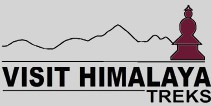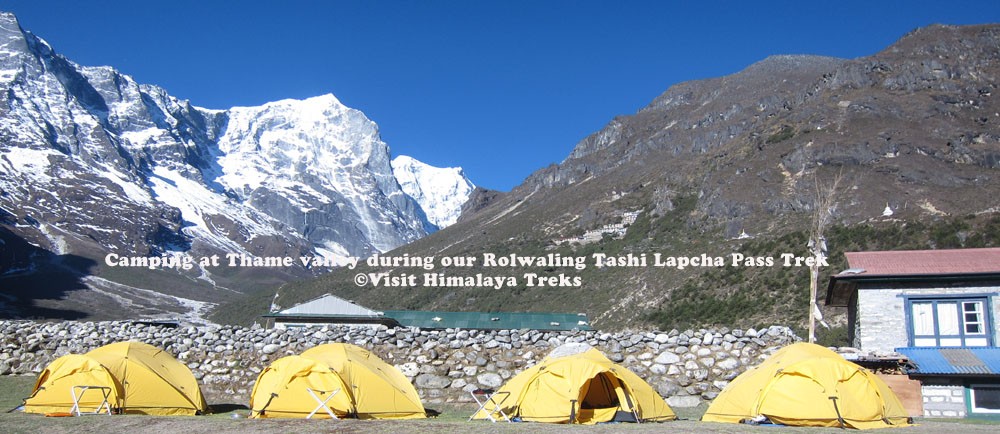Rolwaling Tashi Lapcha Pass Trek lies between the more famous Langtang Valley to its west, and the Everest region to its east. This trek starts at the edge of the Gaurishankar Conservation Area, northeast of Kathmandu, crosses the very high TashiLapcha Pass (5750m), and ends in Lukla, in the Khumbu Valley, from where you’ll fly back to Kathmandu. It’s the best of both worlds as you’ll get to experience the remoter and lesser-visited area of Rolwaling, yet also visit the incredible and popular Khumbu Valley and parts of the Everest Base Camp trek.
Highlights of the Rolwaling Tashi Lapcha Pass Trek
- The beautiful and under-visited Gaurishankar Conservation Area
- Cross the incredible, snowy Tashi Lapcha Pass for a real challenge
- Trek some parts of the beautiful Everest Base Camp trek, which is popular for good reason!
- Views of Gaurishankar (7134m), Everest (8848m) and Makalu (8485m)
This is a very challenging trek, as the TashiLapcha Pass is very high and very challenging, and usually covered in snow. It is recommended for experienced trekkers who have done high-altitude hikes before and are very fit.
The Route Followed
This trek starts with a day’s drive to Singati, via Dolakha and Charikot, northeast of Kathmandu and to the edge of the Gaurishankar Conservation Area. Start trekking the next day, following a river, through flat and forested terrain. The ascent doesn’t really begin until the second half of the second day when you reach the foot of Daldung La (2850m).
Follow the Rolwaling River up the valley. Views of Gaurishankar (7134m) will start to appear ahead of you. The path becomes quite flat again, but the trekking days become shorter as you enter higher elevations, and time will be made for acclimatization and rest days.
Head towards the Ramdung Glacier and towards TshoRolpa Lake (4580m). This is one of the biggest glacial lakes in Nepal and has become considerably bigger over the last few decades because of glacial melting. It is breathtakingly beautiful, with crystal clear waters and surrounded by snow-capped peaks.
After visiting the lake you’ll start to hike towards the TashiLapcha Pass. It’s a steep ascent, then a trek below the pass, followed by a steep descent. This is a very challenging day, as the pass is usually snow-covered. You’ll start to get glimpses of the Khumbu Valley, the Everest region.
Head down to the Thame Valley, which sits west of Namche Bazaar. It is one of the oldest settlements of the Khumbu Valley. Continue towards Namche Bazaar and Monjo, on the Everest Base Camp trail. Exit the Sagarmatha National Park before Monjo, and follow the DudhKosi River down. Return to Kathmandu by air from Lukla, an exciting flight from this (in) famous mountain airstrip.
Rolwaling Tashi Lapcha Pass Trek Accommodation availability
This trek includes camping and sleeping in teahouses (lodges). The first part of the trek is more remote and will require some camping. Once you have descended down into the Khumbu Valley and onto the main Everest Base Camp route, the availability and quality of trekking lodges increase immensely.
Rolwaling Tashi Lapcha Pass Trek Itinerary
Day 01: Arrive in Kathmandu. (1335 meters).
Day 02: Drive to Singati. (950 meters).
Day 03: Trek to Jagat. (1440 meters).
Day 04: Trek to Simigaon. (1996 meters).
Day 05: Trek to Daldung La. (2850 meters).
Day 06: Trek to Beding. (3694 meters).
Day 07: Acclimatization day.
Day 08: Trek to Na. (4183 meters).
Day 09: Acclimatization day.
Day 10: Trek to Tsho Rolpa Lake. (4580 meters).
Day 11: Acclimatization day at Tso Rolpa Lake.
Day 12: Trek to the bottom of Tashi Labtsa. (4800 meters).
Day 13: Cross Tashi Laptsa and trek below the pass at an altitude of 5300 meters.
Day 14: Extra Day.
Day 15: Trek to Thame. (3800 meters).
Day 16: Trek to Monjo. (2835 meters).
Day 17: Trek to Lukla. (2810 meters).
Day 18: Fly to Kathmandu.
Day 19: Free day at Kathmandu.
Day 20: Departure.









